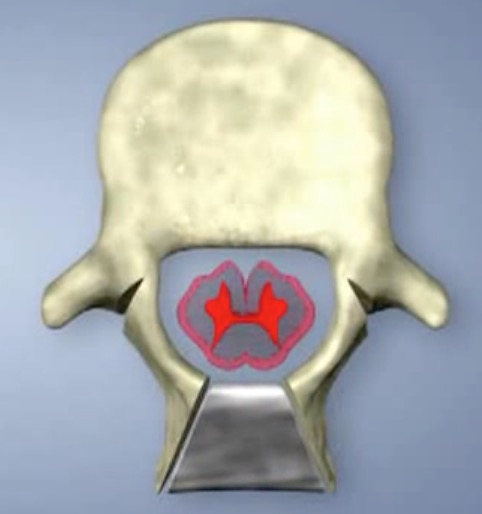French door laminoplasty
Cervical open-door laminoplasty (ODL) is designed to decompress the spinal cord, maintain motion, and prevent postlaminectomy kyphosis. Many traditional laminoplasty techniques involve disruption of the posterior ligamentous structures, most notably the C7-T1 supraspinous ligament and interspinales muscle complex (intraspinous and supraspinous ligaments [ISLs]).
Expansive open door laminoplasty (EOLP) with adjunct anterior short-segment decompression fusion yields an excellent outcome for multilevel cervical spondylotic myelopathy (MCSM) patients who exhibit concomitant short-segment kyphosis, instability or major anterior pathology. Performing laminoplasty first is safer for the spinal cord due to its posterior shifting while anterior procedures are being done.
Wang et al. compared the relative efficacy/risks/complications of performing open-door laminoplasty (ODL) vs. French door laminoplasty (FDL) for treating CSM. Four comparative trials were studied 1). Although the postoperative JOA scores were higher for ODL vs. FDL, the following variables were comparable; operative time, intraoperative blood loss, total complication rate, postoperative cervical lordosis, range of motion, and postoperative palsy.
Wu et al. retrospectively analyzed the risk factors resulting in the development of C5 palsies following open-door laminoplasties for CSM
Of 102 patients, 16 (15.7%) had C5 palsies (13 men and 3 women, average age 62.8 years) vs. 86 without palsies (63 men and 23 women, average age 57.8 years) 2).
Factors predisposing to C5 palsies included; more narrowed width of the intervertebral foramen (WIF), anterior protrusion of the superior articular process (APSAP), a high-signal intensity zone C3-C5 (HIZ: C3-C5), and OPLL; of interest, both groups demonstrated comparable posterior shift of the spinal cord (PSSC).
